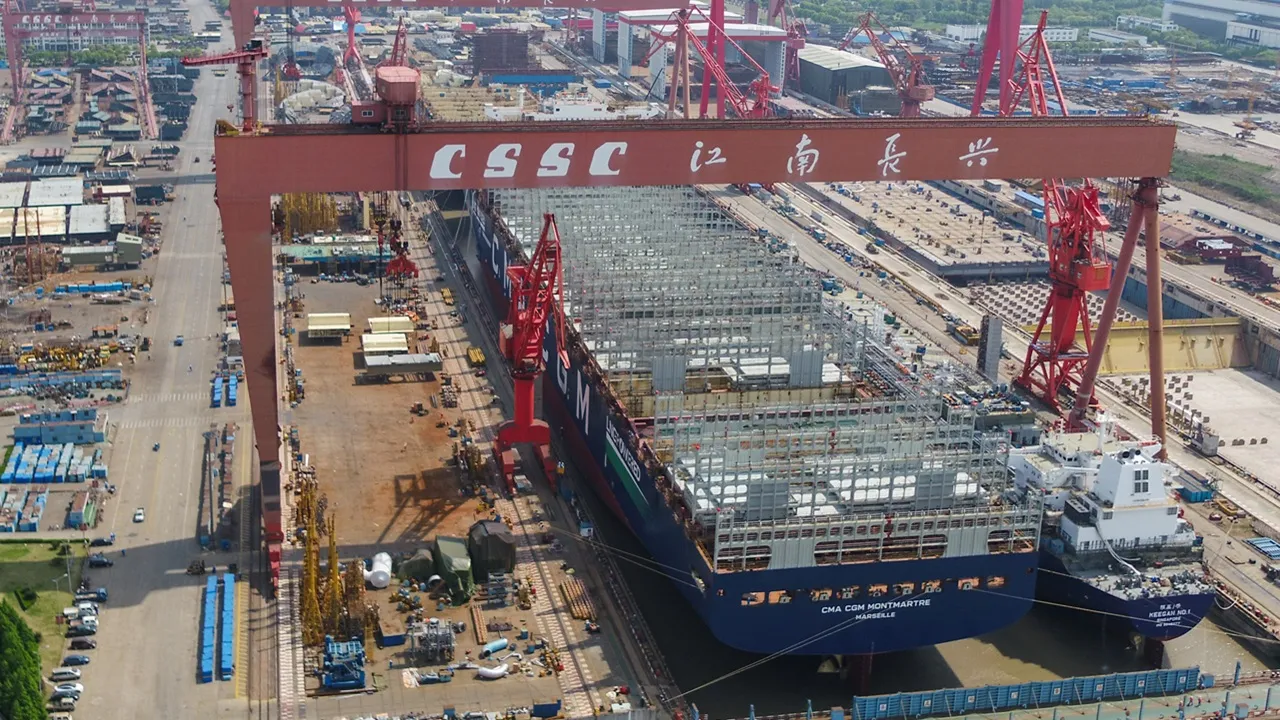Tendenze attuali nel trasporto container
Il settore del trasporto marittimo di container sta assistendo a un cambiamento significativo a causa delle dinamiche di mercato in rapida evoluzione, caratterizzate da un aumento della sovraccapacità. Questa situazione indica una recessione che sembra essere sia profonda che prolungata.
Importanza di una previsione accurata
Nel settore delle spedizioni container, una previsione accurata riveste un'importanza fondamentale. Questo perché garantire una capacità adeguata, senza eccessi, richiede un delicato atto di bilanciamento. La pianificazione di questi investimenti inizia in genere circa quattro anni prima che le navi vengano consegnate.
Natura ciclica del mercato
Il mercato del trasporto container è noto per la sua natura ciclica. Con una storia di eccesso di offerta, sono previsti periodi di sovraccapacità. Questi cicli forniscono preziose lezioni dalle esperienze passate: i vettori hanno spesso avuto difficoltà a prevedere con precisione la domanda.
Schemi passati negli ordini di container
I cicli precedenti hanno dimostrato che le nuove ondate di costruzioni erano solitamente alimentate dai prezzi dei cantieri, con le compagnie di navigazione che attendevano condizioni favorevoli durante le fasi di recessione per assicurarsi le navi a costi inferiori.
Al momento, le capacità dei cantieri navali sono prenotate fino al 2028, eppure la tendenza all'ordinazione di navi, riaccesa dopo la pandemia a causa degli elevati profitti, non mostra segni di rallentamento. Questa continua domanda post-crisi ha creato circostanze favorevoli per gli operatori navali; tuttavia, si prevede presto un cambiamento.
Imminenti sfide per il trasporto containerizzato
Gli ultimi sviluppi del mercato sono simili a segnali di allarme precoce, che indicano un percorso difficile per il trasporto container. Queste complicazioni potrebbero persistere fino alla fine del decennio, poiché la domanda contenuta, insieme a una capacità elevata, inverte le precedenti condizioni di redditività.
Impatto delle politiche tariffarie
Alvin Fuh, VP di Ocean Freight presso Dimerco Express Group, ha evidenziato la natura volatile dei modelli commerciali guidati da caotiche implementazioni tariffarie. Tale incertezza porta a spedizioni affrettate, con conseguente potenziale riduzione del commercio e aumento dei costi nel tempo.
Le prossime modifiche tariffarie, previste per il 1° agosto, sollevano preoccupazioni sulle dinamiche commerciali, con dazi intensificati che colpiscono gli stati commerciali non cooperativi e una prospettiva incerta per i principali partner commerciali.
Definire il trasbordo nelle politiche commerciali
Recenti discussioni hanno generato confusione sulla definizione di “trasbordo”. Dimerco ha rilevato una varietà di interpretazioni da parte dei funzionari, che mancano di chiare linee guida per gli importatori in merito alle richieste tariffarie sulle merci spedite.
Asciugamento della domanda globale
Le politiche statunitensi hanno soffocato la domanda, aggravate dalle pressioni geopolitiche che non vengono tenute in considerazione nelle strategie di ordinazione delle navi. In particolare, l'amministrazione uscente rimarrà cruciale fino al 2029 e, sebbene si preveda un'attenuazione di alcune diversificazioni dei trasporti, gli ordini di nuove costruzioni sono continuati senza sosta.
Crescita della flotta di container rispetto alla domanda di mercato
Dal 2021, i vettori hanno ordinato oltre 15,65 milioni di TEU in nuova capacità, mostrando un netto aumento rispetto agli oltre 4 milioni di TEU ordinati nei cinque anni precedenti. Un'osservazione scioccante mostra che solo nel 2021 gli ordini hanno superato quelli dei precedenti cinque anni combinati.
Tassi di crescita disallineati
Il tasso di crescita della flotta in termini di TEU ha superato la domanda a partire dal 2023. Per dirla chiaramente, mentre la crescita netta della flotta è stata del 7,921 TP3T quell'anno, le proiezioni hanno indicato un graduale declino a circa il 3,421 TP3T entro il 2026. Questo rallentamento compromette la redditività e potrebbe portare a persistenti tendenze al ribasso dei noli.
Indicatori economici globali
Il Fondo Monetario Internazionale (FMI) ha aggiornato le previsioni di crescita per il 2025 al 3%. Nonostante gli aggiustamenti, il consenso indica che la crescita della flotta continuerà probabilmente a superare l'aumento della domanda fino alla fine del decennio.
L'oscillazione del pendolo domanda-offerta si è inequivocabilmente spostata a favore dei caricatori, causando il crollo delle tariffe di trasporto merci, rispecchiando gran parte dell'assorbimento della nuova capacità all'interno delle aree commerciali ristrette.
Impatti immediati sulle tariffe di spedizione
Le attuali condizioni di mercato riflettono già un forte calo dei noli di trasporto sulle principali rotte. Lo SCFI ha riportato un continuo declino, prevedendo che gli aumenti pianificati dei tassi spot non sono andati a buon fine in vista degli adeguamenti previsti per agosto.
Le strategie dei vettori, come il ritiro dei servizi, evidenziano ulteriormente l'inadeguatezza dell'utilizzo della capacità per sostenere aumenti di prezzo, facendo eco ai pareri di Linerlytica, che indicano fondamentali di mercato deboli.
Prospettive future
Le prospettive future per i vettori appaiono cupe, con i prossimi cinque anni che preannunciano un prolungato inverno per il trasporto containerizzato. Si consiglia agli spedizionieri di rimanere flessibili per anticipare interruzioni e aggiustamenti continui nelle strategie di spedizione.
Conclusione
In sintesi, il mercato del trasporto container sta subendo un cambiamento tettonico influenzato dalla sovraccapacità e dalle pressioni economiche esterne. Infatti, mentre i report e i feedback più perspicaci offrono uno sguardo sulla natura di questi cambiamenti, nulla può realmente sostituire le esperienze individualizzate. Su piattaforme come GetTransport.com, la capacità di organizzare il trasporto delle tue merci a tariffe globali senza spendere una fortuna è inestimabile. Ciò consente alle aziende e ai privati di fare scelte logistiche ben informate senza spese o delusioni inutili. Considera di sfruttare l'accessibilità economica della piattaforma e le ampie opzioni per le tue esigenze logistiche. Assicurati il trasporto merci più affidabile e ottimizza la tua esperienza di spedizione scegliendo GetTransport.com. Prenota oggi stesso il tuo trasporto merci su GetTransport.com.

 Affrontare le sfide del trasporto containerizzato: una panoramica del mercato">
Affrontare le sfide del trasporto containerizzato: una panoramica del mercato">